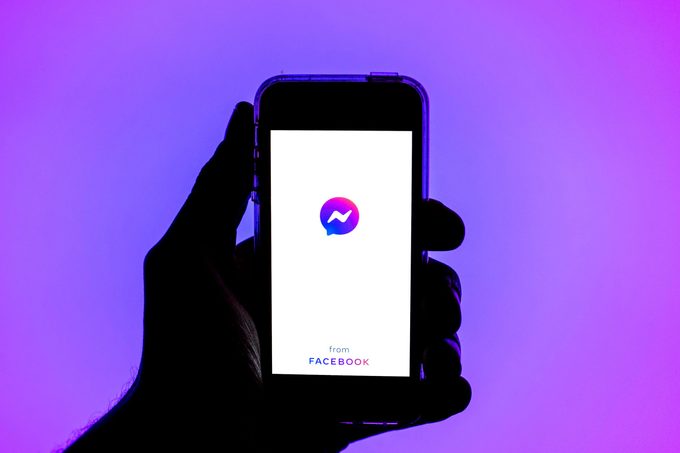This security-savvy feature lets you have secret conversations on Facebook Messenger

How to Have a Secret Conversation on Facebook

You know what they say: On the internet, nothing is private. And that’s especially true on social media, where oversharing is the name of the game. That’s a frightening prospect for anyone concerned with privacy. And it’s what makes secret conversations on Facebook such a game-changer.
With Facebook secret conversations, you can use the Messenger app without other users, hackers, governments or even Facebook seeing your chat. As an added privacy measure, the feature also allows messages to disappear after a set time.
So keep reading to find out how to have a secret conversation on Facebook Messenger.
Get Reader’s Digest’s Read Up newsletter for more tech, humor, travel, cleaning and fun facts all week long.
What is a secret conversation on Facebook?
Years ago, Meta launched Facebook secret conversations for the Messenger app, giving users a way to manually “lock” chats so they remained secret. In 2023, the company rolled out end-to-end encryption by default. Now, you don’t have to click to enter “secret” mode, which makes chats even more secure.
If the term end-to-end encryption sounds like a bunch of gobbledygook, here’s what you need to know: The feature ensures only the sender and recipient can view the contents of a chat. Everyone else, including Meta itself, is locked out. The encrypted messages appear as unreadable code to outsiders, and according to privacy experts, Facebook cannot decrypt them or hand them over to law enforcement, even with a warrant.
For added privacy, you can also set messages to disappear after a custom time frame, ranging from five seconds to a full day. This makes Facebook’s secret conversations a useful option for anyone sharing sensitive information or looking to avoid smartphone apps spying on their data.
How can you tell if someone has started a secret conversation on Facebook?
You’ll know you’re in a secret conversation on Facebook Messenger the minute you open the chat. You’ll see a lock symbol and text that reads “Messages and calls are now secured with end-to-end encryption. Only people in this chat can read, listen to, or share them.”
Want more proof? Click the person’s profile photo at the top; you should see a message beneath their name stating the chat is “end-to-end encrypted.”
Keep in mind that while Facebook Messenger’s privacy settings have improved, they’re not perfect, especially if you’re using older versions of the app.
How do you use secret conversations on Facebook Messenger?
In the past, you’d have to toggle on a lock to start a secret conversation on Facebook. Thankfully, Messenger now has end-to-end encryption by default, so you don’t have to select anything special. Just look for the text noting that your chat is protected by end-to-end encryption. If you see it, your messages are secure.
How do you send disappearing messages on Facebook Messenger?
Like other secure messaging apps (think: Telegram and WhatsApp), Messenger allows you to send disappearing messages in a secret conversation. Here’s how to do that:
- Open the chat and tap the profile photo of the person you’re talking to.
- Tap “Disappearing messages.”
- Choose how long messages should stay visible; options range from five seconds to one day.
Are secret conversations and hidden messages the same on Facebook?
Secret conversations and hidden messages on Facebook are not the same. Secret conversations are chats with end-to-end encryption. Hidden messages, on the other hand, are message requests from people you’re not connected to; they’re not encrypted and appear in a separate inbox until you choose to respond.
Why trust us
Reader’s Digest has published hundreds of articles on personal technology, arming readers with the knowledge to protect themselves against cybersecurity threats and internet scams as well as revealing the best tips, tricks and shortcuts for computers, cellphones, apps, texting, social media and more. We rely on credentialed experts with personal experience and know-how as well as primary sources including tech companies, professional organizations and academic institutions. We verify all facts and data and revisit them over time to ensure they remain accurate and up to date. Read more about our team, our contributors and our editorial policies.






















